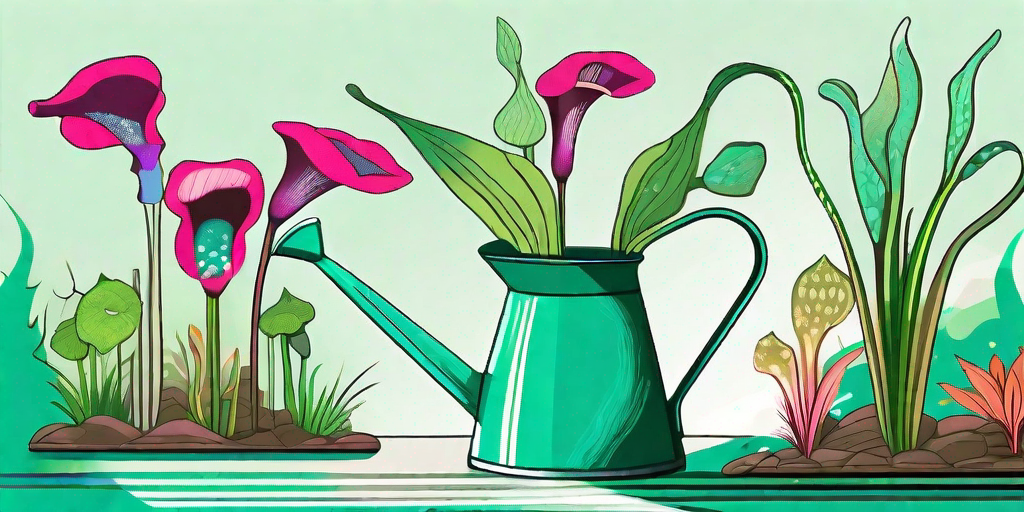
Welcome to the world of carnivorous plants, where the tables are turned and plants feast on insects. Among these fascinating species, the pitcher plant stands out with its unique, jug-like structure designed to trap unsuspecting prey. But don't worry, they don't bite humans. They do, however, require a certain level of care and attention, particularly when it comes to watering. So, grab your watering can and let's dive into the art of pouring love into your pitcher plants.
The Basics of Pitcher Plant Care
Understanding Pitcher Plants
Before we delve into the specifics of watering, it's important to understand what makes pitcher plants unique. Native to various parts of the world, from the jungles of Borneo to the swamps of the American South, pitcher plants have adapted to thrive in nutrient-poor soils. How? By evolving into carnivores, of course! Their "pitchers" are actually modified leaves that act as traps for insects and other small creatures.
But don't let their carnivorous nature fool you. Pitcher plants are not as tough as they seem. They require a delicate balance of light, humidity, temperature, and water to thrive. Too much or too little of any of these elements can lead to a sad, wilting pitcher plant. And nobody wants that.
Watering Needs
Watering a pitcher plant is not as simple as pouring water into the pitcher. In fact, that's a surefire way to drown your plant. Instead, pitcher plants prefer to be watered from the bottom up. This mimics their natural habitat, where they often grow in waterlogged soils or even in standing water.
But don't go flooding your plant pots just yet. Pitcher plants are also sensitive to the type of water they receive. They prefer rainwater, distilled water, or reverse osmosis water, as these are free of the minerals and chemicals found in tap water that can harm the plants.
How to Water Your Pitcher Plant
Step-by-Step Guide
-
Collect rainwater or purchase distilled or reverse osmosis water. If you're using tap water, let it sit out for 24 hours to allow chlorine to evaporate.
-
Place your pitcher plant in a tray or saucer. This will allow the plant to absorb water from the bottom up.
-
Pour the water into the tray, not the plant. The water level should be about 1/4 to 1/2 inch deep.
-
Wait for the plant to absorb the water. This can take several hours or even a day, depending on the size of the plant and the pot.
-
Once the water is absorbed, check the soil. It should be damp but not waterlogged. If it's too dry, add more water. If it's too wet, let it dry out before watering again.
Common Mistakes to Avoid
-
Overwatering: While pitcher plants like moist soil, too much water can lead to root rot.
-
Using Tap Water: The minerals and chemicals in tap water can harm pitcher plants. Always use rainwater, distilled water, or reverse osmosis water.
-
Watering From the Top: Pitcher plants prefer to absorb water from their roots, not their pitchers. Always water from the bottom up.
FAQs About Watering Pitcher Plants
How often should I water my pitcher plant?
There's no one-size-fits-all answer to this question as it depends on several factors, including the size of your plant, the size of the pot, the type of soil, and the humidity level. However, a good rule of thumb is to keep the soil consistently moist but not waterlogged. This usually means watering every few days.
Can I use tap water for my pitcher plant?
It's best to avoid tap water, as it often contains minerals and chemicals that can harm pitcher plants. Instead, use rainwater, distilled water, or reverse osmosis water.
Why are the leaves of my pitcher plant turning yellow?
Yellow leaves can be a sign of overwatering or using the wrong type of water. If you notice yellow leaves, check your watering habits and the type of water you're using.
Conclusion
Watering pitcher plants may seem like a daunting task, but with a little knowledge and practice, you'll be a pro in no time. Remember, these plants are adapted to specific conditions in the wild, and the closer you can mimic those conditions, the happier your plant will be. So, pour some love into your watering routine, and watch your pitcher plants thrive.
Happy watering!















